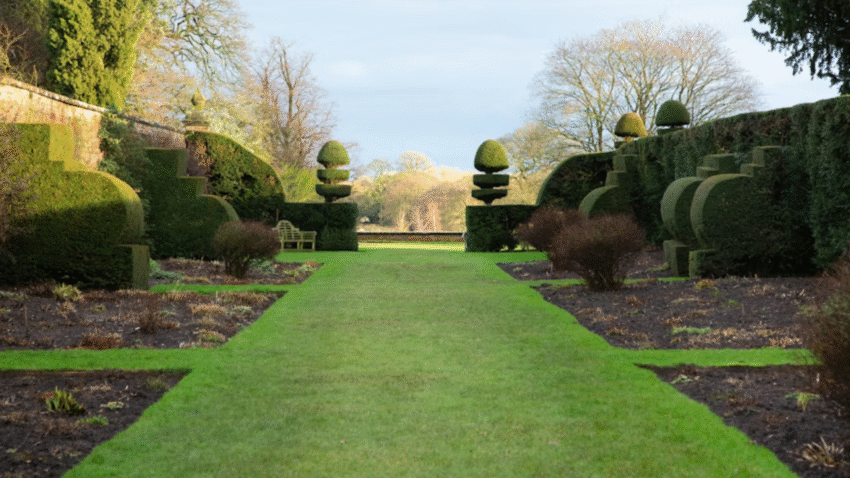Introduction
Does your lawn look patchy, tired, or thin no matter how much you water and fertilize? Learning how to top dress your lawn with compost can transform compacted soil, add valuable nutrients, and encourage lush, green growth — naturally. In this complete step-by-step guide, you’ll discover why compost top dressing works, how to do it properly, and how to avoid the common mistakes that can undermine your hard work.
Why Top Dressing With Compost Matters for a Healthy Lawn
Top dressing is the practice of spreading a thin layer of organic material — like compost — over your lawn. It’s an age-old trick that serious gardeners use to improve soil structure, boost microbial activity, and add slow-release nutrients that strengthen grass roots. Unlike synthetic fertilizers, compost feeds the soil and your turf, creating a thriving ecosystem below the surface.
When done right, top dressing can correct minor low spots, help break down thatch, reduce soil compaction, and even improve drainage. It’s an eco-friendly, budget-friendly, and sustainable way to get a healthier, more resilient lawn.
Step-by-Step Guide to Top Dressing With Compost
Ready to give your lawn a natural boost? Follow these practical steps:
1. Choose the Right Compost
Use high-quality, finished compost that’s dark, crumbly, and free of foul odors. Look for compost that’s screened to remove large chunks — you want fine material that spreads evenly. You can buy bagged compost or make your own from yard waste and kitchen scraps, but avoid compost that contains weeds or contaminants.
2. Mow and Water Before Top Dressing
Mow your lawn slightly shorter than normal and bag the clippings. This helps the compost reach the soil surface instead of sitting on top of long blades. Water your lawn lightly a day or two before top dressing so the soil is moist but not soggy.
3. Calculate How Much Compost You Need
A good rule of thumb is about ¼ to ½ inch of compost spread across the lawn. For most average lawns, that equals roughly 1–2 cubic yards of compost per 1,000 square feet. Buying a little extra ensures you have enough to fill in low spots.
4. Spread the Compost Evenly
Use a shovel to toss compost into small piles around your yard, then use a rake or leveling lute to spread it evenly. Work in sections to make sure you don’t miss any areas or apply too much in one spot. A spreader designed for top dressing can make the job easier for large lawns.
5. Work the Compost Into the Grass
After spreading, use the back of a leaf rake, a push broom, or your leveling lute to gently work the compost down into the grass canopy so it makes good contact with the soil. Avoid burying the grass completely — blades should still be poking through.
6. Overseed if Needed
Top dressing pairs perfectly with overseeding. After applying compost, sprinkle grass seed over bare or thin areas. The compost acts as a seedbed, keeping seeds moist and protected until they germinate.
7. Water Thoroughly
After top dressing (and overseeding if needed), water your lawn lightly to help settle the compost and start the process of nutrients leaching into the soil. Keep the soil consistently moist — but not waterlogged — for the next couple of weeks.
8. Repeat Annually
Top dressing with compost once a year — ideally in early spring or early fall — helps maintain healthy soil structure, feeds your lawn naturally, and reduces the need for synthetic fertilizers.
Common Mistakes to Avoid
Mistake 1: Using Too Much Compost
Solution: Stick to a light layer, about ¼–½ inch thick. Heavy layers can smother grass blades and lead to fungal issues.
Mistake 2: Using Unfinished Compost
Solution: Always use well-finished, mature compost. Raw organic matter can introduce weed seeds or rob the soil of nitrogen during decomposition.
Mistake 3: Skipping Soil Prep
Solution: Mow your lawn and water lightly beforehand so the compost reaches the soil instead of sitting on top of thick grass.
Mistake 4: Ignoring Uneven Spreading
Solution: Take your time to spread compost evenly. Uneven distribution can lead to patchy growth and poor results.
Mistake 5: Forgetting Follow-Up Watering
Solution: Water after top dressing and keep the soil lightly moist while compost works its magic.
Extra Lawn Care Tips & Hacks
✅ Combine With Aeration: For maximum benefit, aerate your lawn first to allow compost to penetrate deeper into the root zone.
✅ Use Compost Tea: Between top dressings, apply compost tea to feed beneficial microbes and boost soil health.
✅ Choose the Right Time: Early spring or fall are best for top dressing cool-season grasses; late spring works well for warm-season grasses.
👉 Don’t miss our guide on “How to Aerate Your Lawn for Better Soil Health” for the perfect one-two punch!
Conclusion
Top dressing your lawn with compost is one of the best-kept secrets for healthier, thicker, and greener grass — naturally. It improves your soil from the ground up, reduces your reliance on chemicals, and helps your turf handle stress better all year long.
Bookmark this guide, grab some quality compost, and treat your lawn to a boost it will love. Your soil, your grass, and your neighbors will thank you!
